KINX
A QLCS system developed across Tulsa CWA and moved ENE to NE. Using the three ingredients method, along with the two algorithms, allowed me to get about 10 min lead time on a QLCS tornado in northern Cherokee Co.
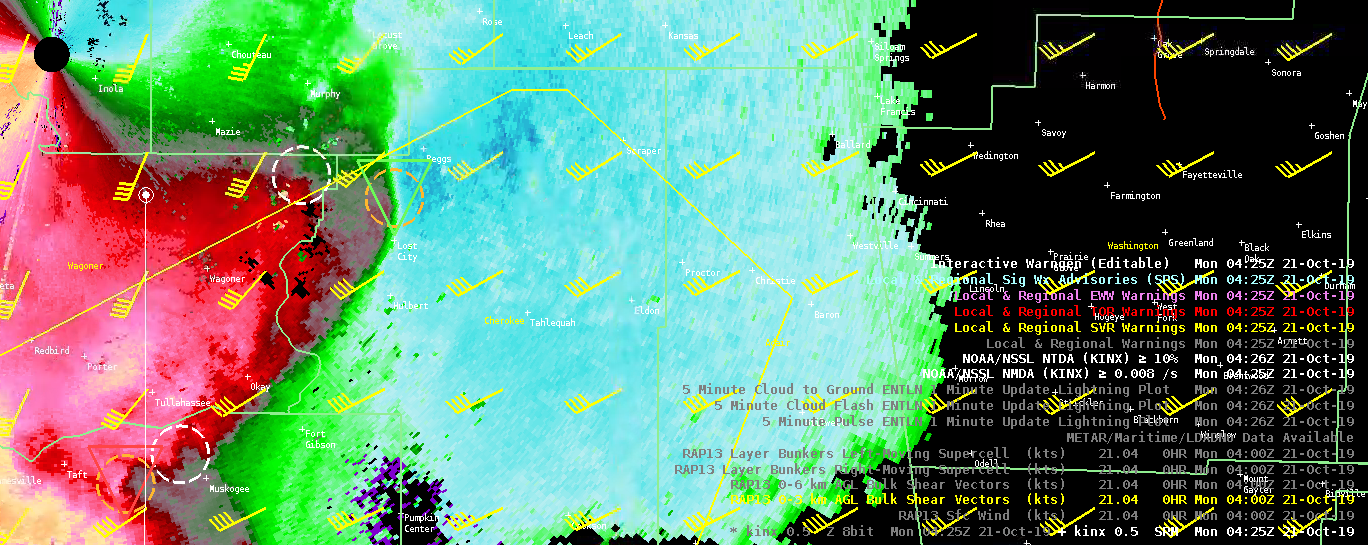
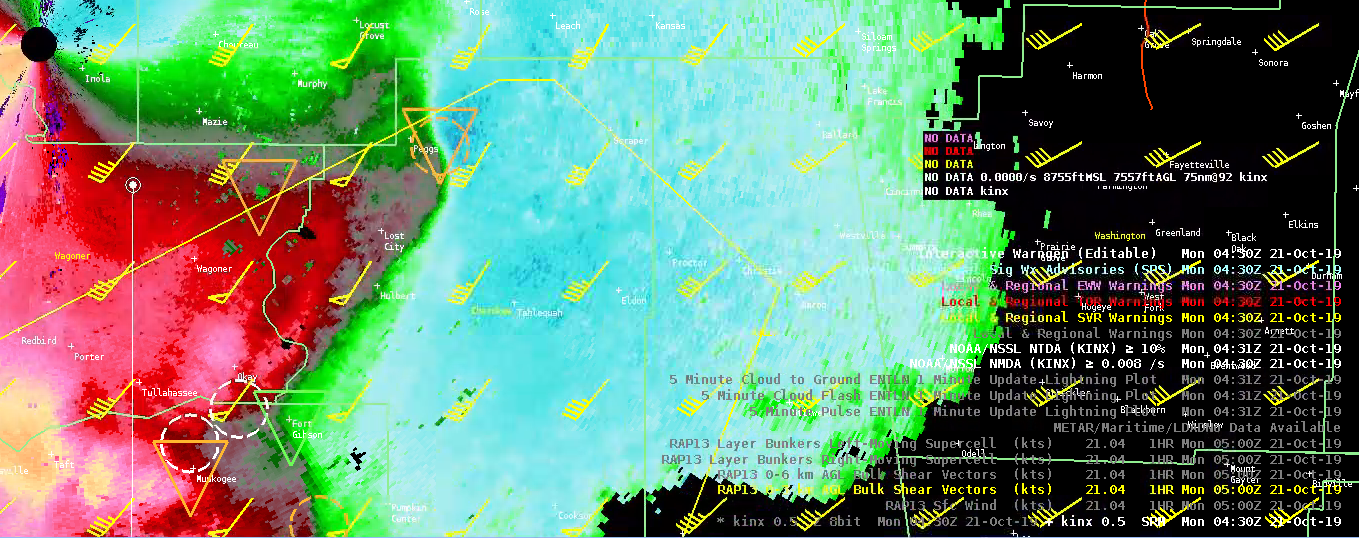
Tornado warning was issued at 0432Z.

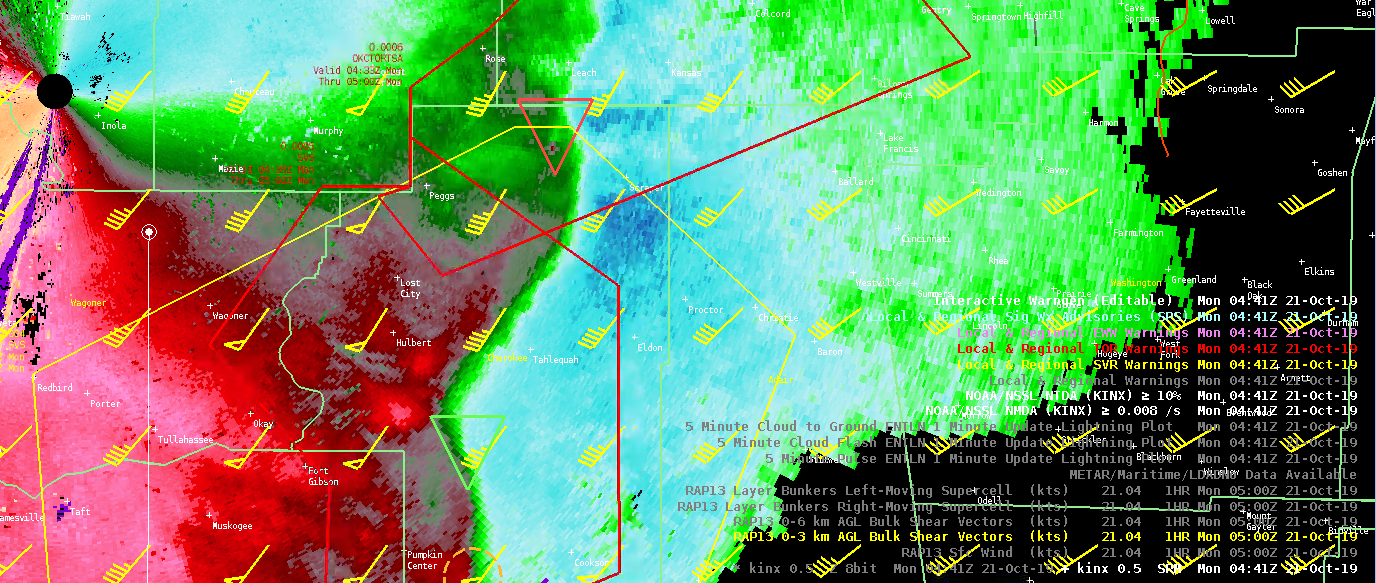
Over the course of the week, I’ve found that co-located detections (NMDA and NTDA) along with steady or increasing intensity trends in both, have given me increased confidence to issue or continue downstream warnings. While the NTDA probabilities can be somewhat low, at times (esp. QLCS systems), the monitoring the trends in the intensity output has been very valuable to me. Some sort of visualization of the trends (similar to ProbSevere) would be extremely helpful.
Earlier, the combination of the NMDA, NTDA, and three ingredients method gave me confidence to continue a tornado warning downstream of a current warning.
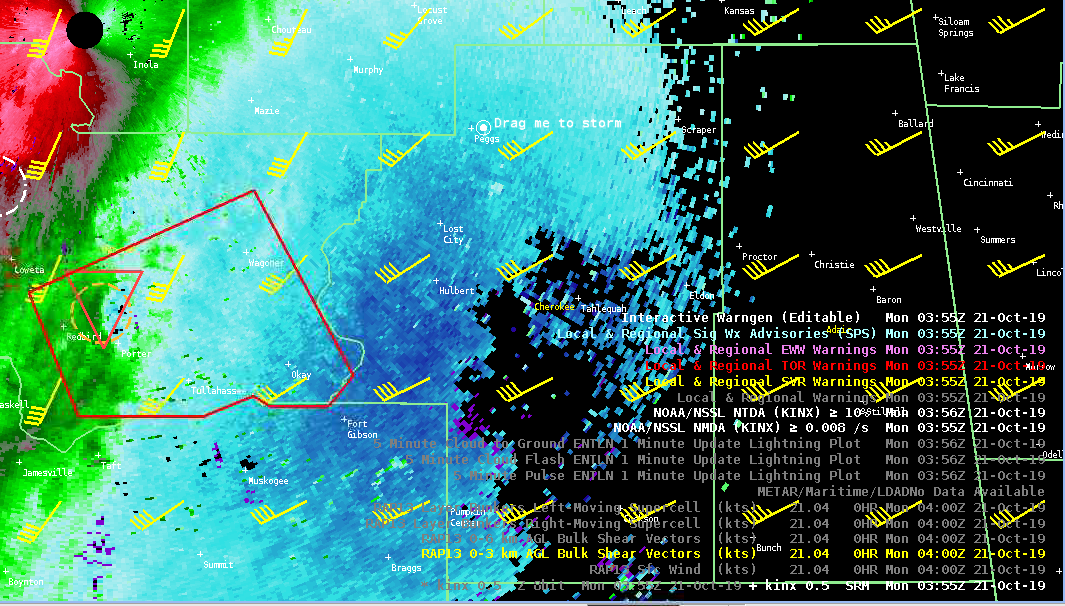
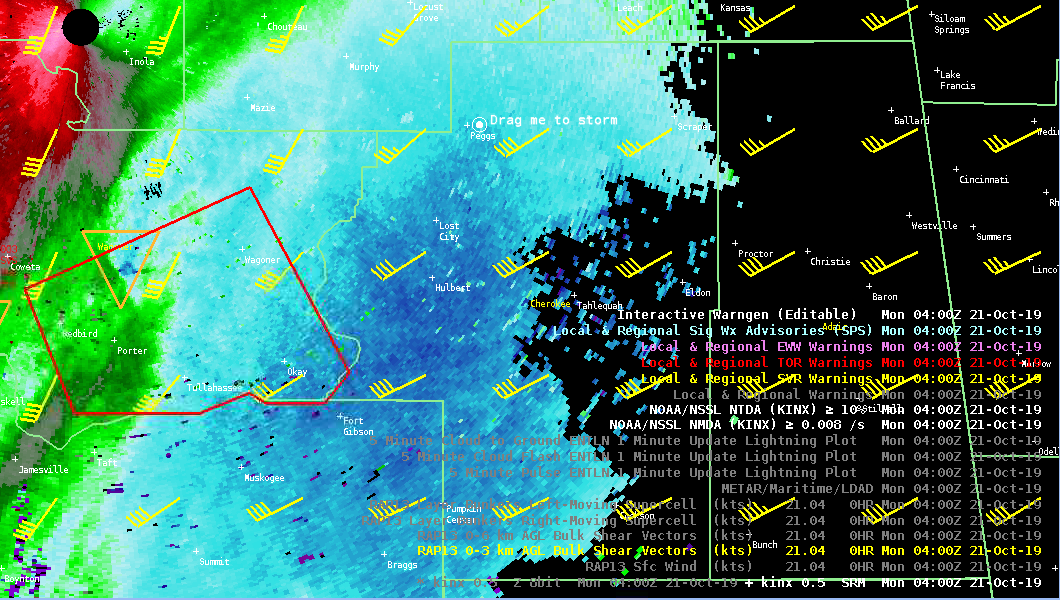
New Tornado Warning was issued between 0400Z to 0405Z and there was a tornado LSR
There was another QLCS tornado earlier in the event in which the NTDA showed quick and substantial increase in probabilities – 39% @ 410Z, 43% @ 412Z, 67% @ 413Z, 59% @ 415Z. This didn’t really provide much lead time as I was a little late on the Tornado Warning, but the probabilities behaved as they should have.
– Beltzer
